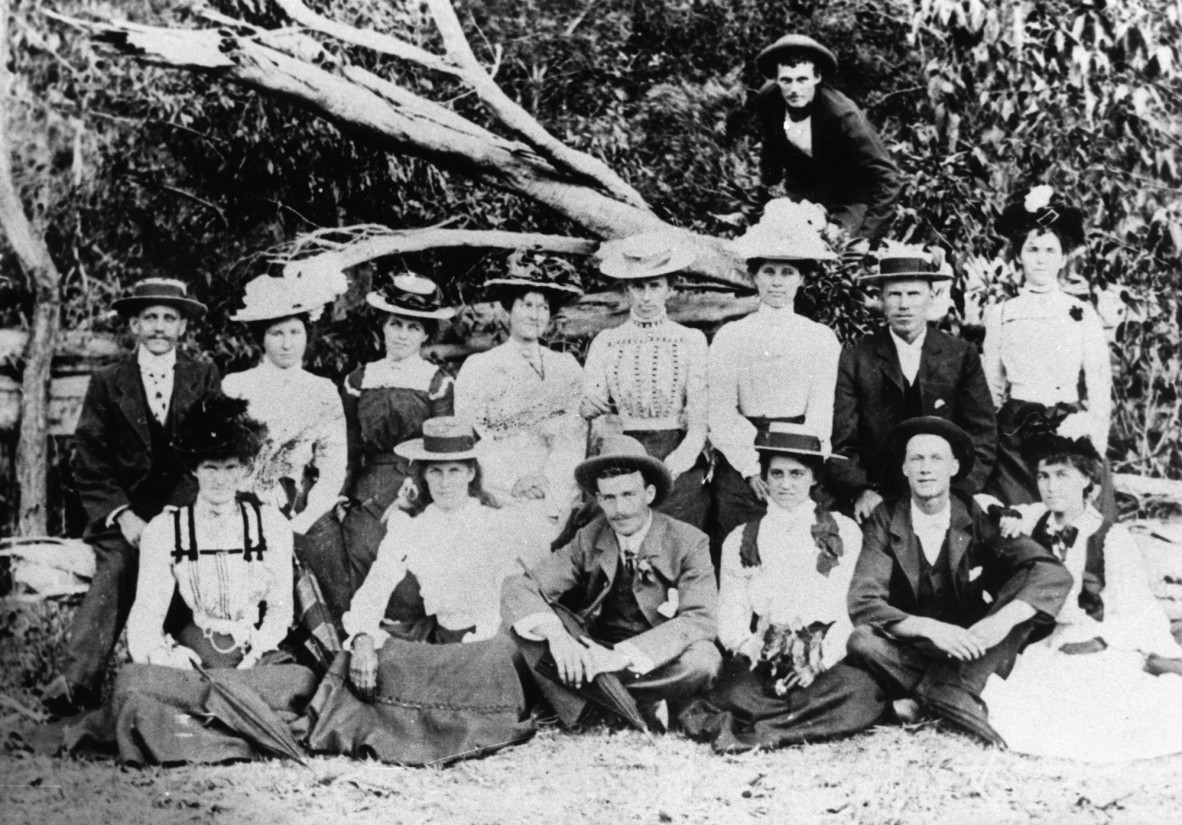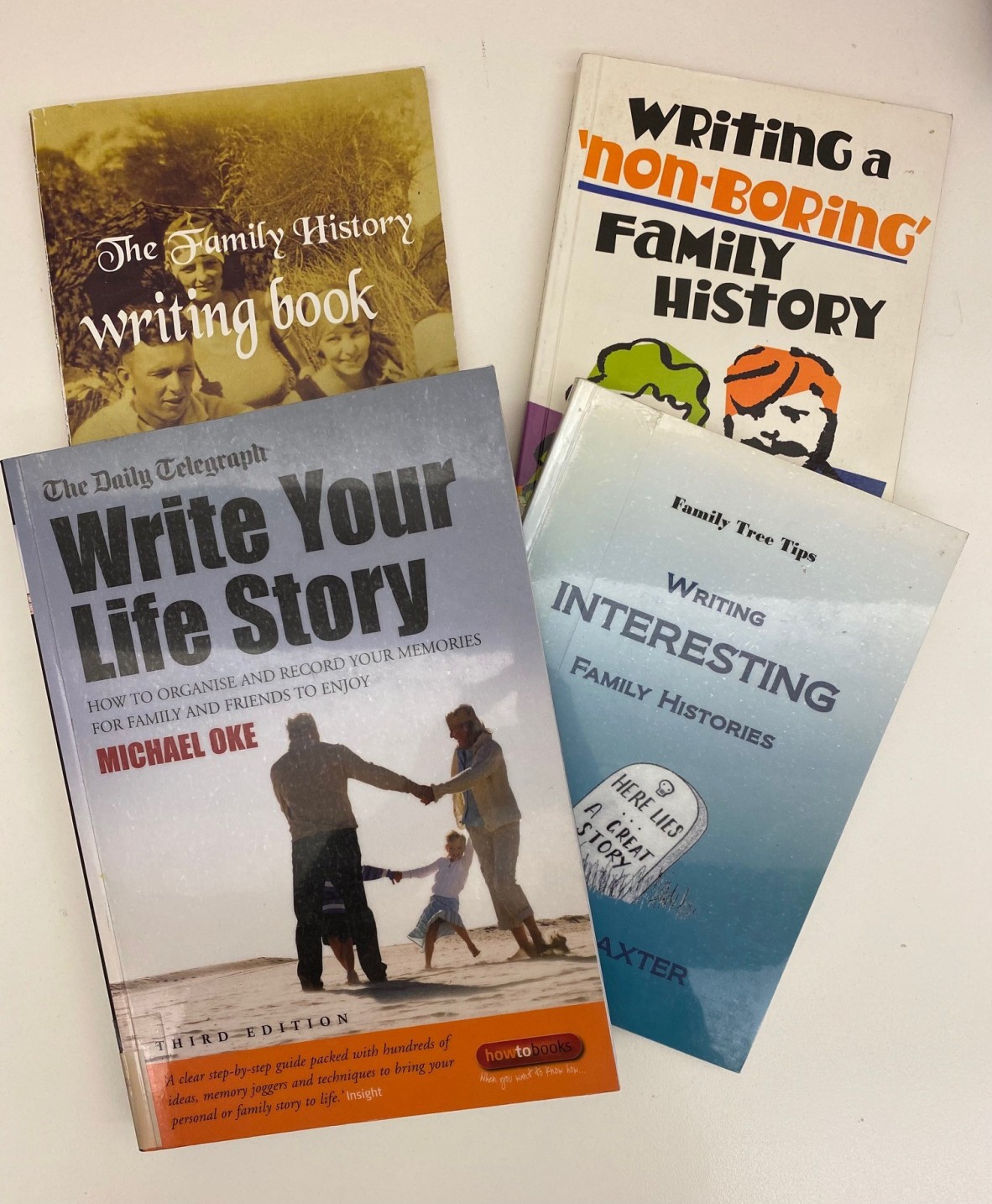Writing your family history
By Katy Roberts, Library Technician, Information and Client Services | 24 August 2021
Researched your family history and wondering what to do with your findings? In this blog post, we outline tips and tricks for turning your list of names and dates into a fascinating family history story.
Intended audience:
Are you writing your story to share with your family, or to leave as a legacy for future generations? Your readers may include your immediate family, your extended family, community groups that your ancestors were involved in, or local studies groups in the town where your family lived.
Oral histories:
Have you interviewed any relatives during your research? Make sure you let them know if you are going to include their story in your book. This includes any photographs that you may wish to use.
Sensitive topics:
Do you plan to include everything that you find - warts and all – or are you going to edit some events? Some family members may embrace “skeletons in the cupboard”, such as children born out of wedlock or a criminal past, as the human side of an ancestor, while other family members may take offence and refuse to believe your research. If you are unsure, warn the person before they read your story.

Woodford residents, the Beanland family, at a reunion. John Oxley Library, State Library of Queensland, Negative number: 38197.
Bringing the past to life:
You want your book to be interesting, not a simple list of names and dates. Here at State Library family history researchers often ask us “Why?”. Why did people move from A to B? Why did they take that job? Read about the social life and customs of the period to gain an understanding of places where ancestors met and married. Also read about economic hardship causing people to move to find work or to own land. Did your ancestors hold religious beliefs that motivated the family to settle elsewhere? Or had family and friends who had already migrated write letters full of the wonders of the new land and their success? Migration schemes over the past 160 years have promoted a new country as a new hope, a new opportunity, and Queensland as a land of space & sunshine.
Use your imagination when writing your story. No this isn’t ‘making things up’ but attempting to put yourself in your ancestor’s shoes.
Use inherited items as a starting point. A piece of furniture or an item of jewellery passed down through generations may have a special meaning.

Covers of four books about how to write your family history, available in State Library's collection.
Style / structure:
Think about the structure of your history. Will you use a chapter per person or per family group or organise your information chronologically by place? If you have never written anything more complex than a grocery shopping list, then check your local area for creative writing classes. Contact your nearest library or family history centre. For example, Queensland Family History Society has recently presented online courses on “Bringing your ancestors to life” and publishing your story.
Will you group all photographs together or place them individually as the story evolves?
Group genealogical charts together, either at the front of the book, or as an appendix at the end. Make sure you inform living family members before including any family tree that you intend to publish.
Deadlines:
Are you writing with no end date in sight, or do you have a deadline? You may need to set goals to have your book completed in time for the big family reunion that is taking place when Covid-related travel restrictions ease.
Publishing / final presentation:
The final draft of your book is entirely your choice and there are many software programs available to assist you with layout and design. You may wish to employ a graphic designer to draw up genealogical charts, assist with layout of photographs or pay for the services of an editor to assist with your masterpiece.
You may wish to simply print your pages and staple them together for others to read. Self-publishing companies can be found through an internet search or can be recommended by writers’ groups.
There is no need to include references or scholarly footnotes but an index can be a very useful tool for your readers.
Good luck with your journey.
Further reading:
- Writing interesting family histories / Carol Baxter (FAMHIS 929.1 2010)
- Write your life story: how to record and present your memories for family and friends to enjoy / Michael Oke (FAMHIS 808.6692 2008)
- Family history writing book / Noeline Kyle (G 808.066929 2001)
- Writing a ‘non-boring’ family history / Hazel Edwards (G 808.0669291 1997)
More information
- Family history month - /familyhistorymonth
- Ask Us - /plan-my-visit/services/ask-us
- Library membership - /get-involved/become-member
- One Search catalogue - http://onesearch.slq.qld.gov.au
Comments
Your email address will not be published.
We welcome relevant, respectful comments.